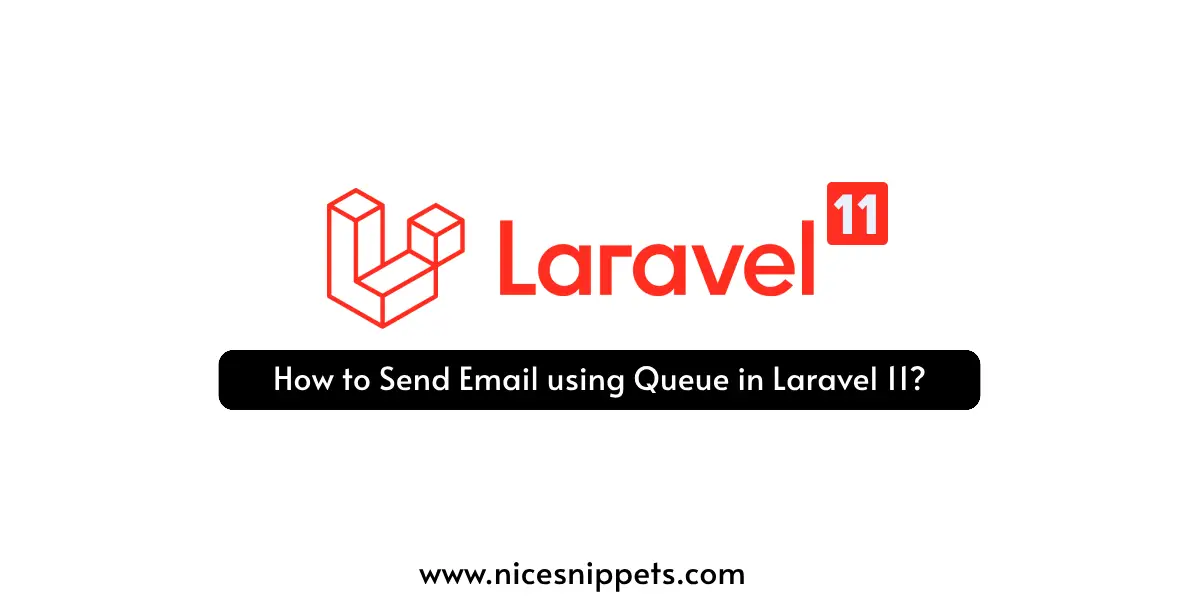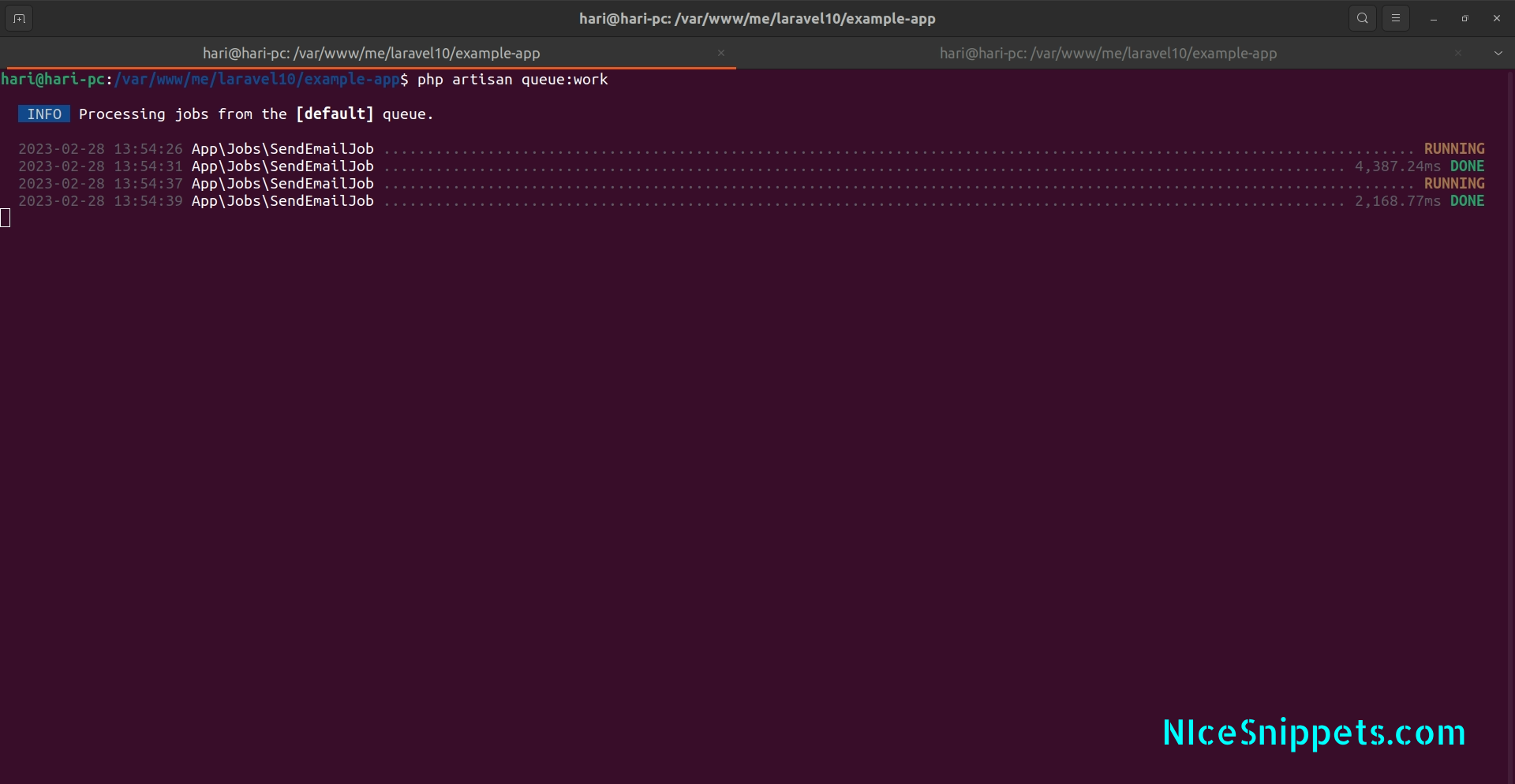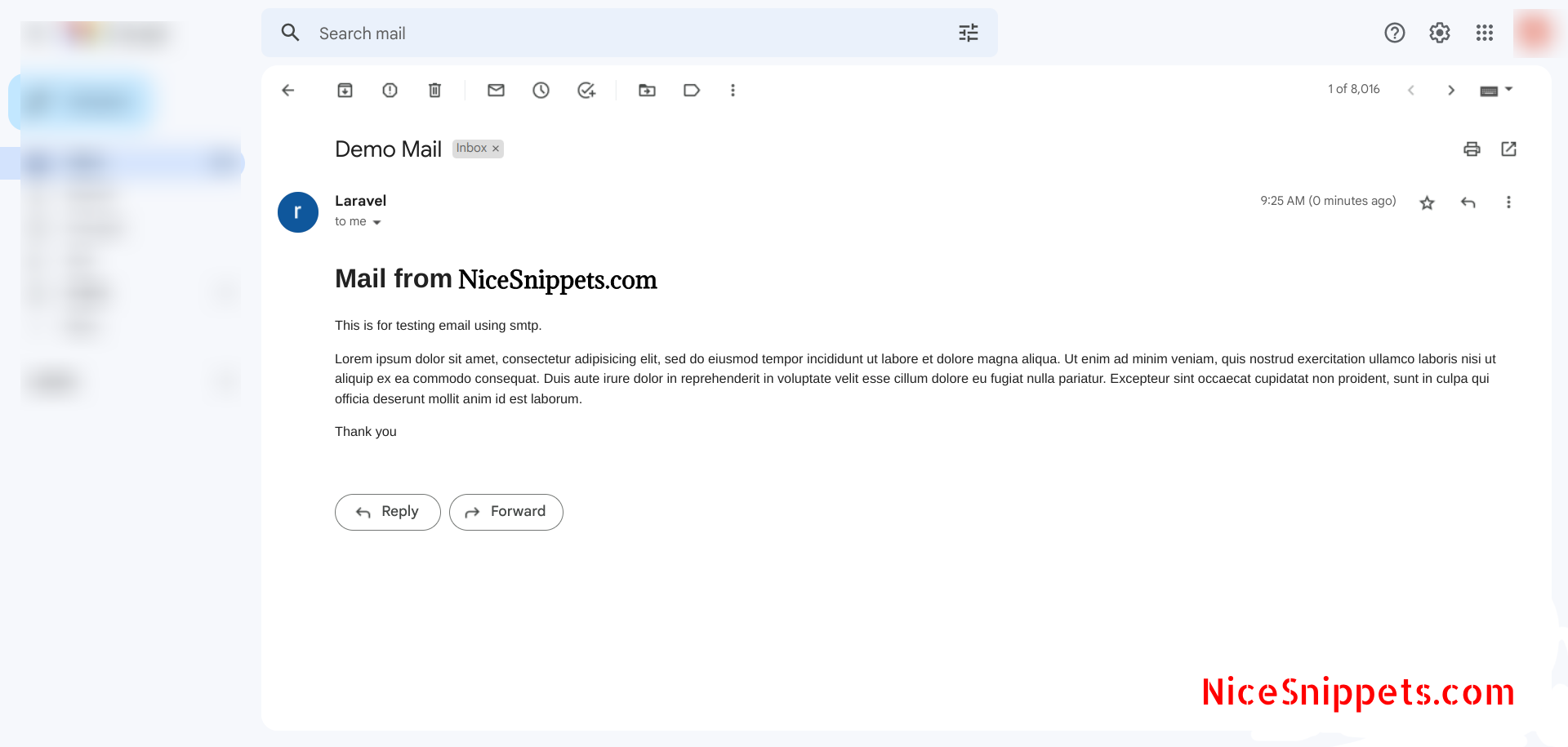29-Mar-2024
.
Admin

Hello Dev,
In this guide, I'll illustrate how to utilize a queue to send emails efficiently within a Laravel 11 application.
Oftentimes, certain tasks such as email dispatching or handling payment gateways may introduce delays in loading processes. Sending emails for verification or invoicing, for instance, can be time-consuming due to the nature of the service. To mitigate this and ensure a smoother user experience without prolonged wait times, leveraging a queue system is highly advantageous. Queues offer rapid processing, thereby enhancing user satisfaction by minimizing loading times.
Here's a step-by-step walkthrough to implement this functionality:
Step for How to Send Email Using Queue in Laravel 11?
Step 1: Install Laravel 11
Step 2: Queue Configuration
Step 3: Make Mail Configuration
Step 4: Create Mail Class
Step 5: Create Controller
Step 6: Create Routes
Step 7: Create Blade View
Step 1: Install Laravel 11
This step is not required; however, if you have not created the Laravel app, then you may go ahead and execute the below command:
composer create-project laravel/laravel example-app
Step 2: Queue Configuration
Now, in the next step, we will make configurations on the queue driver. First of all, we will set the queue driver to "database". You can set it as you want. Additionally, we will define the driver as Redis too. So, define the database driver in the .env file:
.env
QUEUE_CONNECTION=database
After that, we need to generate migration and create tables for the queue. So let's run the below command for queue database tables:
Generate Migration:
php artisan make:queue-table
Run Migration:
php artisan migrate
Step 3: Make Mail Configuration
In the second step, you have to add the mail configuration. Set the mail driver as "gmail", the mail host, mail port, mail username, and mail password. Laravel 11 will use these sender details for emails. You can simply add them as follows:
.env
MAIL_MAILER=smtp
MAIL_HOST=smtp.gmail.com
MAIL_PORT=465
MAIL_USERNAME=mygoogle@gmail.com
MAIL_PASSWORD=rrnnucvnqlbsl
MAIL_ENCRYPTION=tls
MAIL_FROM_ADDRESS=mygoogle@gmail.com
MAIL_FROM_NAME="${APP_NAME}"
Step 4: Create Mail Class
In this step, we will create a mail class called `DemoMail` for sending emails. Here, we will write code for which view will be called and the object of the user. So let's run the below command.
php artisan make:mail DemoMail
Now, let's update the code in the `DemoMail.php` file as follows:
app/Mail/DemoMail.php
<?php
namespace App\Mail;
use Illuminate\Bus\Queueable;
use Illuminate\Contracts\Queue\ShouldQueue;
use Illuminate\Mail\Mailable;
use Illuminate\Mail\Mailables\Content;
use Illuminate\Mail\Mailables\Envelope;
use Illuminate\Queue\SerializesModels;
class DemoMail extends Mailable
{
use Queueable, SerializesModels;
/**
* Create a new message instance.
*/
public function __construct(public $mailData)
{
//
}
/**
* Get the message envelope.
*/
public function envelope(): Envelope
{
return new Envelope(
subject: 'Demo Mail',
);
}
/**
* Get the message content definition.
*/
public function content(): Content
{
return new Content(
view: 'emails.demoMail'
);
}
/**
* Get the attachments for the message.
*
* @return array
*/
public function attachments(): array
{
return [];
}
}
Step 5: Create Controller
In this step, we will create a `MailController` with an `index()` method where we will write code to send an email using queue to a given email address. we will use queue() to send mail in queue. So first, let's create the controller by executing the following command and update the code in it:
php artisan make:controller MailController
Now, update the code in the MailController file.
app/Http/Controllers/MailController.php
<?PHP
namespace App\Http\Controllers;
use Illuminate\Http\Request;
use Mail;
use App\Mail\DemoMail;
class MailController extends Controller
{
/**
* Write code on Method
*
* @return response()
*/
public function index()
{
$mailData = [
'title' => 'Mail from NiceSnippets.com',
'body' => 'This is for testing email using smtp.'
];
Mail::to('your_email@gmail.com')->queue(new DemoMail($mailData));
dd("Email is sent successfully.");
}
}
Step 6: Create Routes
In this step, we need to create routes for a list of sending emails. So, open your "routes/web.php" file and add the following route.
routes/web.php
<?php
use Illuminate\Support\Facades\Route;
use App\Http\Controllers\MailController;
Route::get('send-mail', [MailController::class, 'index']);
Step 7: Create Blade View
In this step, we will create a blade view file and write the email that we want to send. Now, we will just write some dummy text. Create the following files in the "emails" folder.
resources/views/emails/demoMail.blade.php
<!DOCTYPE html>
<html>
<head>
<title>NiceSnippets.com.com</title>
</head>
<body>
<h1>{{ $mailData['title'] }}</h1>
<p>{{ $mailData['body'] }}</p>
<p>Lorem ipsum dolor sit amet, consectetur adipisicing elit, sed do eiusmod
tempor incididunt ut labore et dolore magna aliqua. Ut enim ad minim veniam,
quis nostrud exercitation ullamco laboris nisi ut aliquip ex ea commodo
consequat. Duis aute irure dolor in reprehenderit in voluptate velit esse
cillum dolore eu fugiat nulla pariatur. Excepteur sint occaecat cupidatat non
proident, sunt in culpa qui officia deserunt mollit anim id est laborum.</p>
<p>Thank you</p>
</body>
</html>
Run Laravel App:
All the required steps have been done, now you have to type the given below command and hit enter to run the Laravel app:
php artisan serve
Next, you must have to run following command to see queue process, you must have to keep start this command:
php artisan queue:work
You will see layout as like bellow if queue is works:

Now, Go to your web browser, type the given URL and view the app output:
http://localhost:8000/send-mail
Output:

Keep Laravel Queue System Running on Server:
As we know we must need to keep running "php artisan work" command on the terminal because then and then queue will work. so in server, you must have to keep running using Supervisor. A supervisor is a process monitor for the Linux operating system, and will automatically restart your queue:work processes if they fail.
So let's install Supervisor using bellow command:
Install Supervisor:
sudo apt-get install supervisor
Next, we need to configuration file on supervisor as below following path, you can set project path, user and output file location as well:
/etc/supervisor/conf.d/laravel-worker.conf
[program:laravel-worker]
process_name=%(program_name)s_%(process_num)02d
command=php /home/forge/app.com/artisan queue:work sqs --sleep=3 --tries=3 --max-time=3600
autostart=true
autorestart=true
stopasgroup=true
killasgroup=true
user=forge
numprocs=8
redirect_stderr=true
stdout_logfile=/home/forge/app.com/worker.log
stopwaitsecs=3600
Next, we will start supervisor with below commands:
sudo supervisorctl reread
sudo supervisorctl update
sudo supervisorctl start laravel-worker:*
Now you can check it, from your end.
I hope it can help you...
#Laravel 11